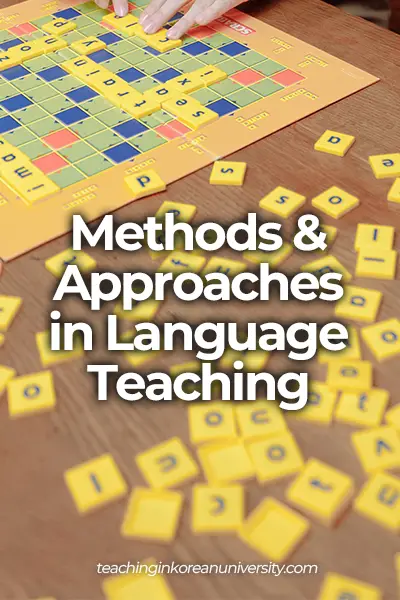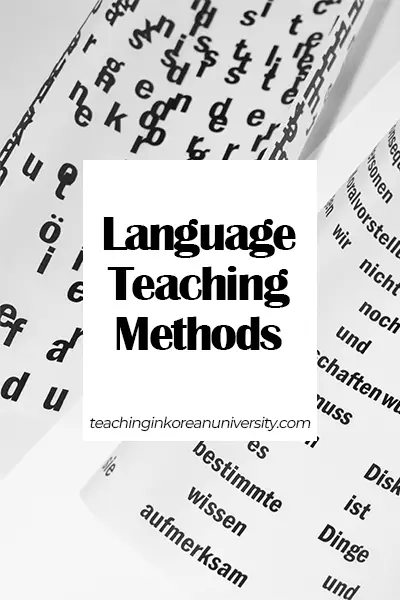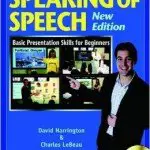Ever since English as a second language has become popular, many approaches and methods in teaching ESL began to appear. You may have heard of TPR, CLT, and TBL. These are some of the well-known approaches and methods in language teaching but aren’t the only ones. In this article, we will go over a list of different language teaching methods and approaches. Depending on your class atmosphere or teaching material, you might want to choose a different approach and method.

Methods and Approaches in Language Teaching
Difference Between Approaches and Methods in Language Teaching
Approach means ‘a way of dealing with something,’ and method means ‘a way’ or ‘a process’ of completing a task. In terms of language teaching, approach and method are used interchangeably.
Types of Approaches and Methods in Language Teaching
Check out the list of different types of language teaching approaches and methods. Which one do you think will work best in your ESL classroom?
Direct Method
The direct method, which is often used to teach foreign languages, is also called the natural method. When teachers use the direct method to teach English as a second language, they encourage students to only use English in the classroom. It is best for students to stay away from speaking their native language according to the direct method. The point of this method in language teaching is to get students immersed in English. ESL teachers can do this by using realia, pantomime, and other visual aids. This method emphasizes pronunciation more than grammar. This method of language teaching was established in England around 1900. The direct method is known to be the opposite method of more traditional language teaching approaches.
Audio-Lingual
The audio-lingual method is one of the more traditional approaches mentioned right above. This method, which became popular in the 1960s, is also called the Army Method or New Key. During World War II, the US military trained a large number of service people using a similar method to be able to communicate in other languages. The audio-lingual method is based on behaviourist theory, which believes that students can be trained through a system of reinforcement. In other words, this method is all about repetition and habits.
The audio-lingual method requires students to master the basics and then the rules that combine the basic elements. Most of the practices use dialogues and conversations. Students first listen, then drill, and then write or see the written form. Dialogues are essential in this method as the emphasis is on pronunciation.

Language Teaching Approaches
Total Physical Response (TPR)
Total Physical Response (TPR) is a method developed in the 1960s by James Asher, an American psychologist. TPR was developed based on how young children learn their first language. Babies physically respond to parental commands. So, this language teaching method is based on the connection between learning and physical movement. When using the method, ESL teachers speak in English using body movements, and students listen and respond with whole-body actions. Due to the nature of this method, it works best for classrooms with beginner-level young children. Try using this method to teach vocabulary and verbs.
Communicative Language Teaching (CLT)
Communicative language teaching (CLT) is one of the most used language teaching methods in classrooms. This approach focuses on interaction. Classrooms that use the CLT method, have a lot of interaction among the students and between students and instructors.
ESL teachers will often put students in small groups or partners. Then, the students are asked to talk about certain topics, like personal experiences, hobbies, family, and friends in English. In this case, teachers act more as a guide than a guru. As a teacher, you just want to make sure students are talking to each other and asking questions.
Many learning applications and textbooks are based around CLT. These are often structured around the following functions:
- agreeing/disagreeing
- giving advice
- asking for help
- inviting
- talking about time
- expressing location
Task-based Language Learning (TBL)
Task-based learning (TBL) or Task-based language teaching (TBLT) in ESL focuses on completing a task. It is a commonly used language teaching method around the world. Because this method focuses on the completion of tasks or using the language rather than accuracy, it is considered a branch of communicative language teaching (CLT). In ESL classrooms, the TBL approach is done in teams. Students are allowed to work together and use whatever language to complete the task. This way, students can explore the language and stay engaged. When using task-based language teaching, instructors mostly remain as a guide to assist students throughout the process.
The Natural Approach
The natural approach was developed in the late 1970s and early 1980s by Stephen Krashen, an American linguist, and Tracy Terrell, an American education theorist. The most important part of the natural approach is to make the classroom a stress-free zone. The natural approach believes that a second language should also be acquired in a similar way the students learned their first language.
As an ESL teacher, you are encouraged to help students communicate in English and discouraged from giving heavy grammar lessons and explicitly fixing student errors. Students should be exposed to a learning environment where the language is comprehensible ESL teachers can do this by giving students reading and listening materials. Next, in a very natural and unforced way, comes speaking and writing. This language teaching approach believes that students truly learn a language once they understand the message and have developed enough vocabulary.

Language Teaching Methods
The Situational Approach to Teaching English
This method is closely related to the other methods that view language as forming a habit. The focus is on using language in certain situations, without errors. Find out more about it here:
FAQs About Language Teaching Methods
Here are some of the most frequently asked questions about methods and approaches for language teaching.
What are the approaches and methods in language teaching?
Some of the most well-known approaches and methods in language teaching are the direct method, audio-lingual, TPR, CLT, TBL, and natural approach.
What are the four parts of language teaching?
The four parts of language teaching are reading, speaking, listening, and writing.
What are the modern approaches to language teaching?
Some of the modern approaches to language teaching include collaborative learning, spaced learning, flipped classrooms, self-learning, gamification, and crossover learning.
Approaches and Methods in Language Teaching: Join the Conversation
What are your thoughts on these approaches and methods in language teaching? Which one is the most effective method, in your opinion? Let us know which one you are using in your classroom. We’d love to hear from you!




